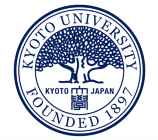The last decade has brought increased demand for omega-3 polyunsaturated fatty acids (PUFAs) as a component of infant food formula, dietary supplements and aquaculture feed. This has placed pressure on major sources of omega-3 PUFAs, fatty fish, such as salmon and mackerel. Now researchers at Niigata University of Pharmacy and Applied Life Sciences in Japan (NUPALS) have engineered a yeast as an alternative source.

A transmission electron microscopy (TEM) image of oleaginous yeast Lipomyces starkeyi. The white visible inside the cells indicate the presence of lipid.
It’s already been shown that microalgae can produce PUFAs, such as eicosapentaenoic acid (EPA). But microalgae face mass-culture production obstacles and levels of lipid production that are too low. NUPALS researchers have now engineered a yeast, Lipomyces starkeyi, to produce EPA, says Hiroaki Takaku, who led the research at NUPALS.
L. starkeyi is one of several so-called oleaginous yeasts, which can accumulate large amounts of lipids in the form of triacylglycerol. “L. starkeyi has a higher lipid content than other oleaginous yeasts and can accumulate up to 85% of its dry cell weight,” explains Takaku. “It has a poor ability to degrade its own lipids, which is a great advantage.
However, L. starkeyi only synthesizes up to 18-carbon long PUFAs, says Takaku. “So, we introduced a part of an algae’s EPA synthesis system to give it the ability to produce EPA, a 20-carbon PUFA.”

A researcher experiments with fermentation to produce EPA-containing lipid using recombinant oleaginous yeast, Lipomyces starkeyi.
Then the researchers began to look for efficiencies. Production of EPA is a multi-stage process requiring a succession of actions by elongase and desaturase enzymes. Using a knowledge-based machine learning method, developed by Michihiro Araki at Kyoto University, the researchers explored protein databases for candidate eukaryotic microbial desaturases and elongases that would function optimally in L. starkeyi.
Takaku’s group then transferred multiple recombinant genes for these enzymes into L. starkeyi using Japanese-developed long-chain DNA synthesis technology. This L. starkeyi produced PUFAs at up to 18.4% of total fatty acid output (10% EPA).
The researchers also used a regulatory network analysis method, developed by Sachiyo Aburatani at the National Institute of Advanced Industrial Science and Technology, to help increase the expression of genes in the fatty acid synthesis pathway, doubling EPA production.

Lipid produced by a wild type strain of the oleaginous yeast Lipomyces starkeyi (left), and lipid produced by a recombinant, EPA-producing strain of L. starkeyi (right). The EPA-containing oil has a higher proportion of polyunsaturated fatty acids and a low melting point, so it doesn’t solidify easily at room temperature.
Finally, by comparing the genomes of a natural L. starkeyi strain and lipid-accumulating variant strain, a new control factor in lipid production was found. Manipulating it achieved a four-fold increase in lipid levels.
It’s remarkable, Takaku says, that a series of Japanese-developed technologies has yielded a yeast that originally didn’t produce EPA to reach this output after only two years. He thinks commercial production is only a few years away.
This research and each of the analysis technologies mentioned are part of Japan’s Smart Cell Project, which is run by the New Energy and Industrial Technology Development Organization (NEDO).







 Collection: Focal Point on Synthetic Biology in Japan
Collection: Focal Point on Synthetic Biology in Japan